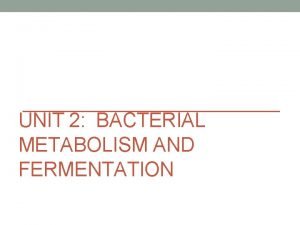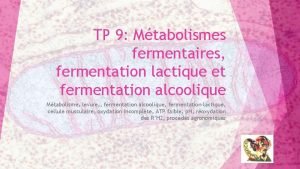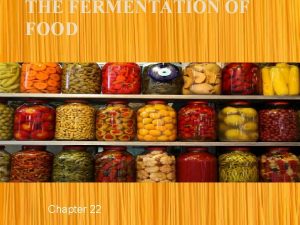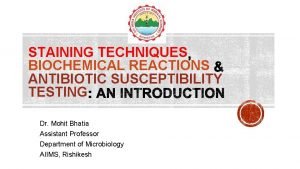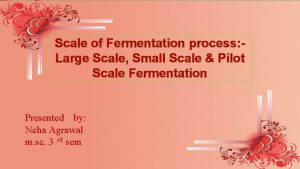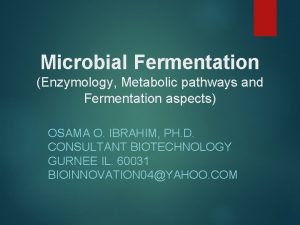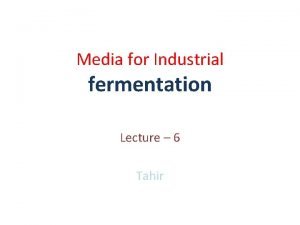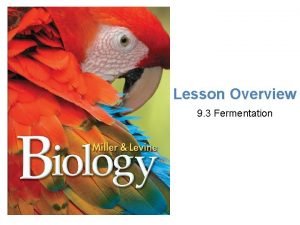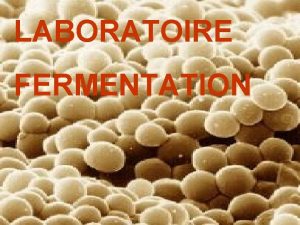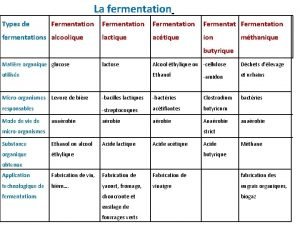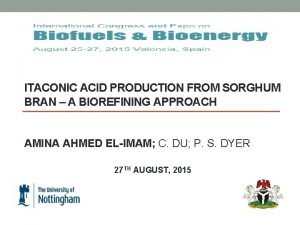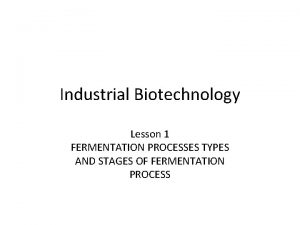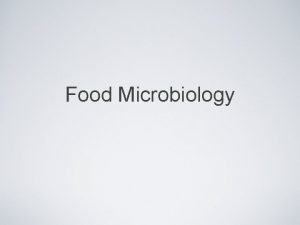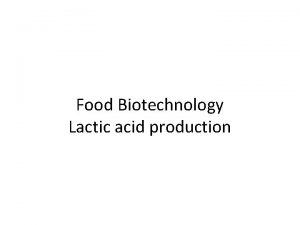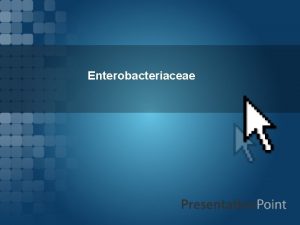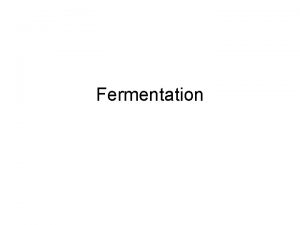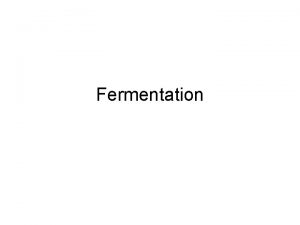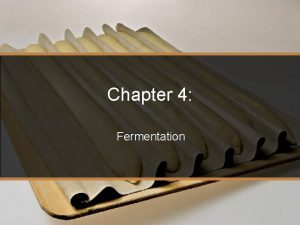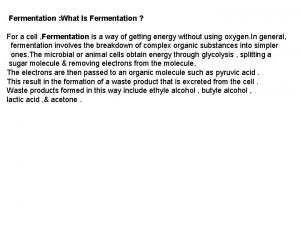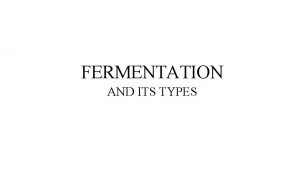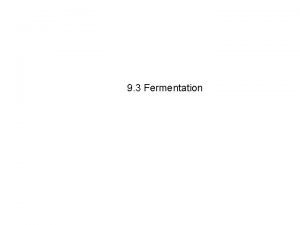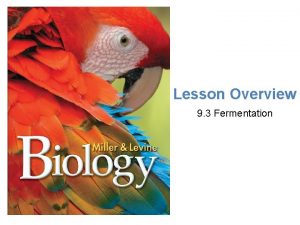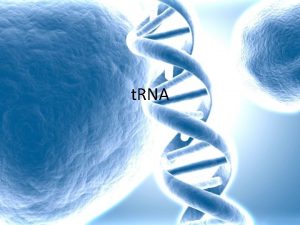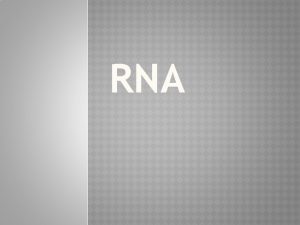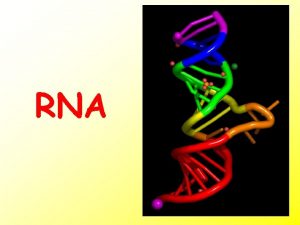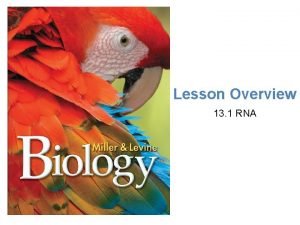Lesson Overview Fermentation Lesson Overview 13 1 RNA















- Slides: 15

Lesson Overview Fermentation Lesson Overview 13. 1 RNA

Lesson Overview Fermentation The Role of RNA How does RNA differ from DNA? 3 important differences between RNA and DNA: (1) the sugar in RNA is ribose instead of deoxyribose, (2) RNA is single-stranded and not double-stranded (3) RNA contains uracil in place of thymine.

Lesson Overview Fermentation The Role of RNA Genes contain coded DNA instructions that tell cells how to build proteins. The first step in decoding these genetic instructions is to copy part of the base sequence from DNA into RNA, • like DNA, is a nucleic acid that consists of a long chain of nucleotides. • uses the copied sequence from DNA to direct the production of proteins.

Lesson Overview Fermentation Functions of RNA 3 main types of RNA: 1. messenger RNA 2. ribosomal RNA 3. transfer RNA

Lesson Overview Fermentation Messenger RNA Most genes contain instructions for assembling amino acids into proteins. messenger RNA (m. RNA): • carry information from DNA to other parts of the cell.

Lesson Overview Fermentation Ribosomal RNA Proteins are assembled on ribosomes, small organelles composed of two subunits. These ribosome subunits are made up of several ribosomal RNA (r. RNA) molecules and as many as 80 different proteins.

Lesson Overview Fermentation Transfer RNA When a protein is built, a transfer RNA (t. RNA) molecule transfers each amino acid to the ribosome as it is specified by the coded messages in m. RNA.

Lesson Overview Fermentation RNA Synthesis How does the cell make RNA? In transcription, segments of DNA serve as templates to produce complementary RNA molecules.

Lesson Overview Fermentation Transcription Most of the work of making RNA takes place during transcription. During transcription, segments of DNA serve as templates to produce complementary RNA molecules. The base sequences of the transcribed RNA complement the base sequences of the template DNA.

Lesson Overview Fermentation Transcription In prokaryotes, RNA synthesis and protein synthesis take place in the cytoplasm. In eukaryotes, RNA is produced in the cell’s nucleus and then moves to the cytoplasm to play a role in the production of proteins. Our focus will be on transcription in eukaryotic cells.

Lesson Overview Fermentation Transcription requires an enzyme, RNA polymerase, that is similar to DNA polymerase.

Lesson Overview Fermentation Transcription RNA polymerase binds to DNA during transcription and separates the DNA strands. RNA polymerase then uses one strand of DNA as a template from which to assemble nucleotides into a complementary strand of RNA.

Lesson Overview Fermentation Promoters RNA polymerase binds only to promoters, regions of DNA that have specific base sequences. Promoters are signals in the DNA molecule that show RNA polymerase exactly where to begin making RNA. Similar signals in DNA cause transcription to stop when a new RNA molecule is completed.

Lesson Overview Fermentation RNA Editing RNA molecules sometimes require bits and pieces to be cut of them before they can go into action. The portions that are cut of RNA and discarded are called introns. In eukaryotes, introns are taken out of pre-m. RNA molecules while they are still in the nucleus. The remaining pieces, known as exons, are then spliced back together to form the final m. RNA.

Lesson Overview Fermentation RNA Editing Introns and exons may also play a role in evolution, making it possible for very small changes in DNA sequences to have dramatic effects on how genes affect cellular function.
 Nutrition in bacteria
Nutrition in bacteria Tp de fermentation lactique
Tp de fermentation lactique Lactic acid fermentation sauerkraut
Lactic acid fermentation sauerkraut Smear bacteria
Smear bacteria Bench scale fermentation
Bench scale fermentation Classification of fermentation
Classification of fermentation Media for industrial fermentation
Media for industrial fermentation Types of fermentation
Types of fermentation Fermentation des glucides
Fermentation des glucides Types de fermentation
Types de fermentation Itaconic acid fermentation
Itaconic acid fermentation Fermentation types
Fermentation types Factors affecting fermentation
Factors affecting fermentation Factors affecting fermentation
Factors affecting fermentation Antigenic structure of e coli
Antigenic structure of e coli Difference between submerged and solid state fermentation
Difference between submerged and solid state fermentation
